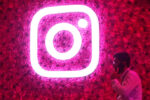
Designing a new logo can be daunting for any business owner or marketer. Your logo is a visual representation that needs to effectively communicate your brand’s personality, values, and unique selling proposition. In this article, we’ll provide expert advice on creating a new logo that effectively represents your brand and resonates with your target audience. Whether you’re making a logo for the first time or looking to refresh your existing logo, this article will provide the guidance and inspiration you need to create a logo that truly reflects your brand.
Keep It Simple
Keep it simple and memorable: Simplicity is key in logo design. The best logos are often the simplest ones that can be easily recognized and remembered. Your logo should be easy to read and understand and not overly complicated or cluttered with unnecessary design elements. A simple logo will also be more versatile, allowing it to be used in various contexts.
Be Unique
Your logo should be distinctive, memorable, and distinct from other brands. It should also be relevant to your brand and the message you want to convey. Avoid using generic icons or clipart, which can make your logo look unprofessional and unoriginal. A unique logo will also help you stand out from your competitors.
Consider Color and Typography
The colors and typography you choose for your logo can significantly impact its effectiveness. Choose colors that reflect your brand’s personality and values and ensure they are consistent with your overall branding. Your typography should be legible, read quickly, and recall your brand’s personality.
Here are some steps you can take to help you decide on the best colors and typography for your new logo:
- Your brand’s personality and values should guide your color and typography choices. For example, choose bright colors and fun typography if your brand is playful and lighthearted. Choose more subdued colors and classic typography if your brand is more serious and professional.
- Different colors can evoke emotions and associations in people. For example, blue is often associated with trust and stability, while red is associated with passion and excitement. Consider the feelings and emotional associations you want your brand to convey, and choose colors that align with those feelings.
- When it comes to typography, choosing a font that is easy to read and legible in different sizes and formats is essential. Avoid overly decorative or complex fonts that make your logo look cluttered or difficult to read.
- Once you have some color and typography options, test them out in different contexts to see how they look in various sizes, on different backgrounds, and in other formats. This will help you ensure that your logo looks great in any situation.
- Finally, feel free to get input from others, such as colleagues or focus groups, on your color and typography choices. Other perspectives can help you identify potential issues or opportunities for improvement.
Hire a Professional
Hiring one to create your logo is always a good idea if you are not a professional designer. A professional designer will have the skills and expertise to create a memorable and effective logo that reflects your brand’s personality and values. They will also be able to provide valuable input and advice throughout the design process, helping you create a logo that truly stands out.
Here are several options for finding and hiring a professional logo designer:
- Freelance marketplaces: Websites like Upwork, Freelancer, and Fiverr allow you to post your logo design project and receive proposals from freelance logo designers. You can review their portfolios, rates, and reviews from previous clients to find the right designer for your project.
- Design agencies: Design agencies typically have a team of experienced designers who can work with you to create a custom logo that fits your brand’s personality and values. You can search for design agencies online or seek referrals from other business owners or colleagues.
- Social media: Social media platforms like LinkedIn, Instagram, and Twitter can be great places to find and connect with professional logo designers. Many designers have a social media presence where they showcase their work and interact with potential clients.
- Referrals: Ask for referrals from other business owners, colleagues, or friends who have previously worked with a professional logo designer. Personal recommendations can be a great way to find a reliable designer who delivers high-quality work.
Regardless of your choice, review the designer’s portfolio and ask for references or testimonials from previous clients. It’s also essential to clearly communicate your needs and expectations so the designer understands your vision for the logo and can create a design that meets your needs.
Don’t Use AI
AI programs use algorithms and machine learning to analyze design patterns, color schemes, typography, and other design elements to generate logos that meet specific criteria. However, it’s worth noting that while AI-generated logos can be a quick and affordable option, they may not always produce the most unique or memorable designs. AI-generated logos are often based on pre-existing design templates or patterns, resulting in logos that look generic or similar to other logos.


